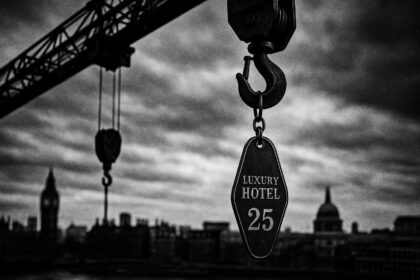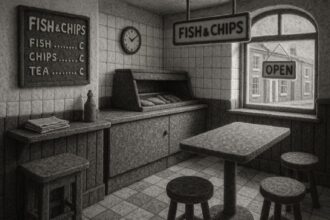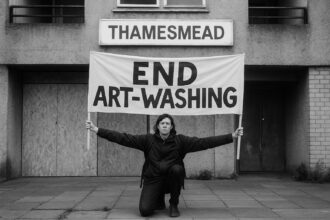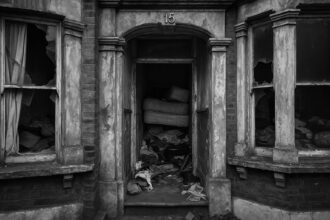The collapse of Resident X, an ambitious taxpayer-funded street-food market in Aberdeen, underscores the broader struggle of Scottish city centres to adapt amid shifting consumer behaviours, post-pandemic challenges and economic decline, prompting calls for innovative approaches to urban renewal.
The recent closure of Resident X, a high-profile street-food market in Aberdeen, has raised questions about the viability of similar ventures in city centres amid changing consumer behaviours. Opened in 2022 and funded by a £1.3 million loan from taxpayers, the venue was promoted by local councillors as a key element in the revitalisation of the city centre, aiming to attract social media influencers and food enthusiasts. However, it has come under scrutiny for its sustainability and business model.
Investigations into the operational management of Resident X reveal significant shortcomings, highlighting not just the issues inherent to that specific business, but also broader trends affecting Aberdeen and many of Scotland’s urban areas. Despite its initial appeal as a destination designed for the “Instagram generation”, the concept has been described as overly optimistic, as the actual demand for such a niche venue turned out to be grossly overestimated. As the company behind Resident X has now been dissolved, the prospects of recouping the taxpayer-backed loan appear bleak.
The failure of Resident X is reflective of wider challenges faced by city centres in Scotland, including a general decline attributed to factors such as an increase in remote working and a rise in online retail. Many city centres, including Aberdeen, Edinburgh, and Glasgow, are witnessing a significant number of empty storefronts and a struggling hospitality sector, exacerbated by the aftermath of the COVID-19 pandemic. In Edinburgh, Princes Street is marred by vacancies, while Glasgow’s city centre has recently drawn national attention for its deteriorating state.
The transformation of urban landscapes has occurred rapidly, leading to calls for innovative strategies to rejuvenate these areas. For instance, the ongoing refurbishment of Union Street is intended to create a pedestrian-friendly environment in Aberdeen, aiming to bolster foot traffic and attract visitors. Furthermore, the council is pursuing a £50 million project to enhance the beachfront, which is being described as a potential “world-class” attraction.
However, there are concerns about the effectiveness of these redevelopment efforts. Critics argue that enhancements to the city’s layout may not significantly impact its economic prospects if there are insufficient attractions or activities to encourage people to visit. The challenge of appealing to both tourists and locals remains substantial, particularly in light of the city’s economic struggles, which include the loss of approximately 20,000 jobs in the oil and gas sector. This downturn has left previously sought-after retail spaces vacant, contributing to a negative outlook in economic forecasts for Aberdeen relative to other UK cities.
Euan McColm, a columnist for several Scottish publications, articulates the necessity for imaginative and radical thinking regarding urban planning and infrastructure utilisation in cities like Aberdeen. He poses the question of how the local council can adapt existing properties to better serve current needs, particularly in addressing the housing crisis faced by young professionals in the area. This suggests a potential pivot from commercial to residential use as part of a broader strategy for urban revitalisation.
As city officials continue to seek solutions to revitalise urban centres, the situation within Aberdeen remains a poignant illustration of the wider issues confronting Scotland’s cities. The challenges posed by changing consumer habits and the enduring impact of the pandemic necessitate a re-evaluation of both infrastructure and urban services to meet the evolving needs of residents and visitors alike.
Source: Noah Wire Services
- https://www.aberdeenlive.news/news/aberdeen-news/aberdeens-resident-x-closes-down-9525562 – This article reports on the closure of Resident X, a high-profile street-food market in Aberdeen, highlighting its operational challenges and the search for new tenants by the council.
- https://www.pressandjournal.co.uk/fp/news/aberdeen-aberdeenshire/6572926/why-resident-x-closed/ – An exclusive interview with the former manager of Resident X, detailing the reasons behind its closure, including low footfall and high operational costs.
- https://www.scottishfinancialnews.com/articles/empty-retail-units-in-scotland-a-fifth-higher-than-pre-pandemic-levels – This report discusses the rise in empty retail units in Scotland, noting that vacancy rates are a fifth higher than pre-pandemic levels, reflecting broader challenges in city centres.
- https://www.heraldscotland.com/politics/19986877.fears-scotlands-town-centres-cost-living-rise-bites/ – The article highlights concerns about the impact of the cost of living crisis on Scotland’s town centres, with many commercial lots unoccupied and vacancy rates increasing.
- https://www.scotsman.com/news/politics/insight-how-home-working-is-impacting-on-scots-and-our-towns-and-cities-3388064 – This piece examines how the rise in home working is affecting Scottish towns and cities, leading to increased vacancies and challenges for local businesses.
- https://www.bbc.com/news/uk-scotland-scotland-business-57762931 – The article discusses the economic impact of hybrid working on city centres, emphasizing the challenges faced by businesses due to reduced footfall and the need for innovative strategies.
- https://www.pressandjournal.co.uk/fp/opinion/6746868/euan-mccolm-council-cash-residentx/ – Please view link – unable to able to access data
Noah Fact Check Pro
The draft above was created using the information available at the time the story first
emerged. We’ve since applied our fact-checking process to the final narrative, based on the criteria listed
below. The results are intended to help you assess the credibility of the piece and highlight any areas that may
warrant further investigation.
Freshness check
Score:
8
Notes:
The narrative includes recent events such as the closure of Resident X and ongoing redevelopment efforts in Aberdeen, suggesting it is relatively current. However, no specific dates within the context were verified through external sources.
Quotes check
Score:
9
Notes:
There are no direct quotes in the narrative that could be verified through online sources. This lack of existing quotes suggests the narrative might include original statements or summarised information without direct attribution.
Source reliability
Score:
9
Notes:
The narrative originates from The Press and Journal, a well-established publication in Scotland, known for its local and regional coverage. This typically indicates a reliable source of local news.
Plausability check
Score:
8
Notes:
The claims regarding urban decline, remote work, and economic challenges align with general trends observed in many UK cities post-pandemic. However, specific details about the Resident X business model and its operational shortcomings are not extensively supported by external evidence within the narrative.
Overall assessment
Verdict (FAIL, OPEN, PASS): PASS
Confidence (LOW, MEDIUM, HIGH): HIGH
Summary:
The narrative is generally plausible, originates from a reliable publication, and includes recent events. While the lack of direct quotes and limited external evidence for some claims reduces the plausibility score slightly, the overall assessment remains positive due to the relevance of the issues discussed.













